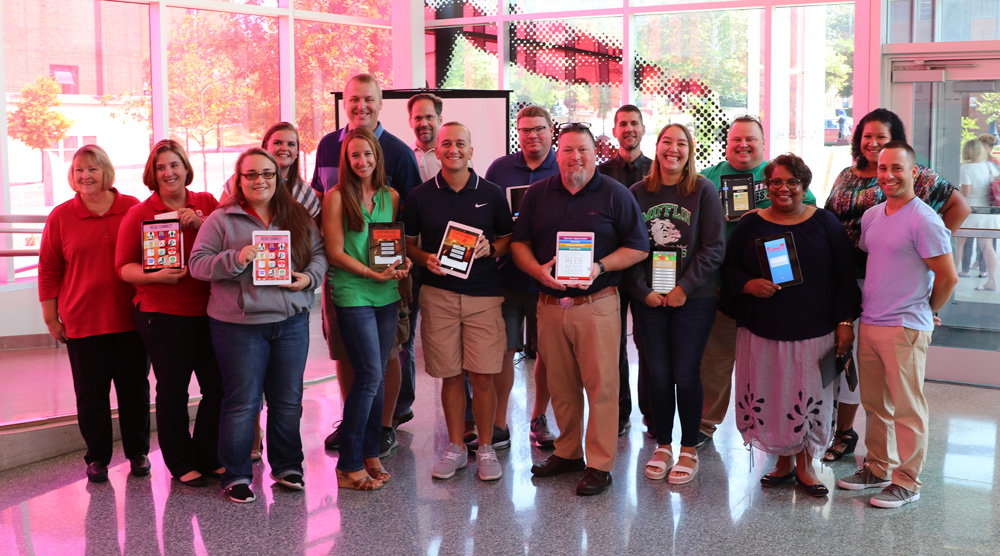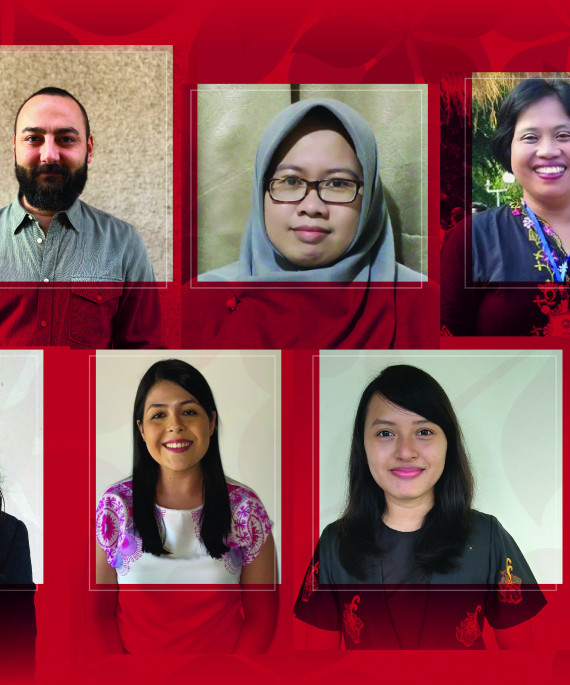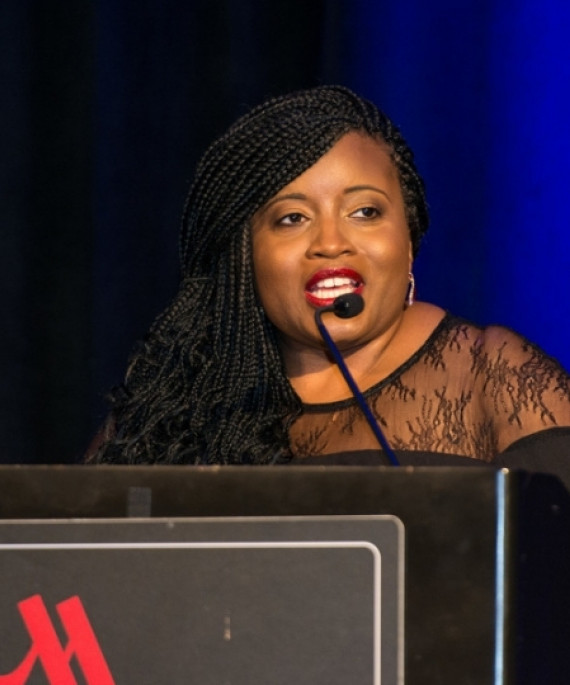
Josh Doran, right, a career tech teacher at Norton Middle School, presents his team’s app at the App Showcase.
Central Ohio teachers from nine schools got down to the brass tacks of solving pressing community problems in a College of Education and Human Ecology computer lab.
Their objectives for the five-day coding academy: Eliminating food deserts; helping a community center maximize resources for residents; finding ways for firefighters to better track exposure to carcinogens.
Weighty matters, all. But who better to address them than teachers tapping into their collective creativity? (Except, maybe, the students they teach.) They would do it using app design.
The college is collaborating with Apple — part of the company’s Community Education Initiative — to train teachers about coding concepts so that they can incorporate the instruction for students in underrepresented areas.
The free academy provides two credit hours of professional development and coding fundamentals. Best of all, the learning will be ongoing.

To give the coding lessons relevancy in the real world, the team partnered with community groups to pose challenges that could be solved with app design.
Assistant Fire Chief Allen Scott described how more firefighters die from cancer than from fires, and that documenting exposures to burning and hazardous materials is critical. Jenna Dacenzo, BS ’16, told the challenges of coordinating work of 12 nonprofit organizations at the Reeb Avenue Center, where she works as a community liaison. And Landon Adams laid out the importance of promoting the Linden Farmers Market in an area where the last grocery store closed 20 months ago.
“They were reflecting a way that we would engage our students once we took this to our school,” said Teddy Dellesky, a math/science teacher at Wedgewood Middle School in Columbus. “Let's find a problem in our community that we're trying to solve. Immediately I had total buy-in.”
Within groups, the teachers wrapped their minds around the problems and how an app could help. Apple instructors were on hand to help tease out solutions and teach coding concepts.
Dellesky and his colleague, Philip Maxwell, designed an app that can work from a kiosk inside the Reeb Avenue Center lobby. Visitors can use a touchscreen to easily navigate the 12 community service organizations inside, and find where in the building they need to go.

Nina Lintz and Al Barnes, both teachers at Mifflin Middle School in Columbus, developed their app to promote the farmers market. They presented their ideas at an App Showcase on the academy’s last day.
“A big thing about the Linden community is they're very proud and they're very loyal,” Lintz said. So their app focuses on community cohesiveness, allowing users to upload photos from market day and recipes they make from the ingredients they buy there. An interactive grocery list tells them which vendors carry items they need to buy.
Josh Doran’s group designed a way for fire chiefs and firefighters to categorize and document the exposure they have after each run they make.
“It's very important for them to document how they are ending their firefight,” the Norton Middle School career tech teacher said. “What chemicals are on them? How are they cleaning themselves up? How are they storing their gear?” The apps post-incident checklist keeps them using proper protocol. A smoke-color option indicates the types of chemicals they might have been exposed to.
“We also are adding tips and videos,” he said, with safe practices to minimize the harmful substances left on their bodies and gear after the fires.

As they learned to work through the development process, the teachers had an eye on how their training would help students.
“They exposed us to other resources that we're going to be able to use in the classroom,” said Mona Simons, MA ’94, a business and tech teacher at Walnut Ridge High School. “It's going to make for a good experience not only for us but for our students.”
Getting continuing education training is not cheap or easy for teaching professionals, said Chris Zirkle, professor of workforce development who helped organize the academy.
“Here's an opportunity to come to campus, right your backyard,” he said.
“It's an opportunity for them to interact with business and industry, which is important, and to get instruction on the latest techniques and methods in programming, so that the information that they provide to students is cutting edge.”



